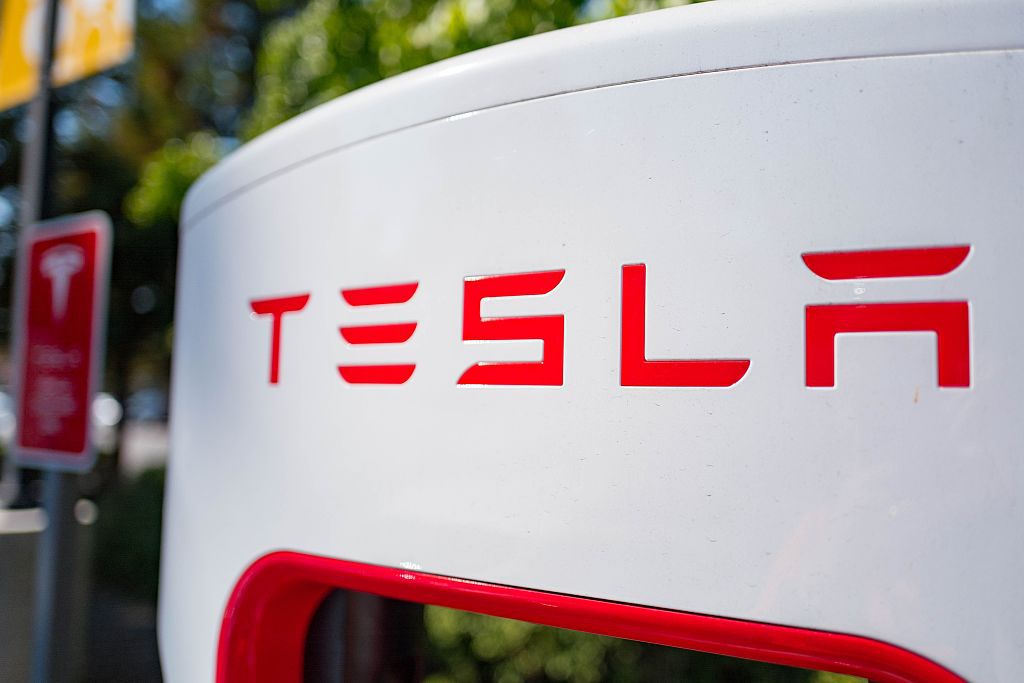When the electric car company Tesla, Inc. (TSLA) launched its initial public offering on June 29, 2010, its shares closed the day at $23.89, a 40.5% gain over its starting price. Since that day, Tesla’s path has been impressive if occasionally rocky, especially over the past few years.
But long-term investors must be pleased: Tesla stock finished August 2024 at $214.11 a share, despite a five-for-one stock split in 2020 and a three-for-one split in 2023.
Key Takeaways
- Tesla achieved profitability recently after years of hugely expensive startup costs.
- It maintained a 55% market share as of 2023, down from 62% the previous year.
- After a long period of market dominance, Tesla now faces competition from virtually every major vehicle manufacturer.
Tesla’s Beginnings
The Tesla success story is widely known. Tesla did what the Big Three could not: produce a quality electric vehicle that is in huge demand.
Contrary to popular belief, Elon Musk was not the founder of Tesla. Engineers Martin Eberhard and Marc Tarpenning created the company, while Musk entered the scene as an early investor.
The company was founded in 2003 but didn’t release its first car—the Roadster—until five years later. In 2012, the company replaced it with the Model S sedan. The same year, Tesla built charging stations in the U.S. and Europe, allowing Tesla owners to charge their vehicles for free.
As of 2024, the company has several models on the market including the Model S, Model 3, Model X, Model Y, and the Cybertruck. Tesla also expanded its product line to offer solar panels and solar roof installation.
Tesla was founded by two engineers, Martin Eberhard and Marc Tarpenning who named the company Tesla Motors. Their work caught the attention of PayPal co-founder Elon Musk, who invested millions during the early rounds of funding.
Musk eventually became chair of the company before taking on the role of the chief executive officer (CEO).
Tesla’s Debt
As an investor, you should first consider Tesla’s debt story and industry background in the automotive industry. Auto manufacturers require huge amounts of capital to invest in the manufacturing process.
Tesla had to fuel its expansion by borrowing money. In the company’s 2021 annual report, Tesla reported total liabilities of $30.5 billion. In 2022, the debt figure rose 17.37% to about $35.7 billion. In 2023, it was about $43.2 billion.
On the asset side, Tesla had more than $29 billion in cash on hand at the end of 2023, a more than 31% increase over the previous year.
Shareholder Equity
A critical part of evaluating Tesla’s capital structure relates to the company’s retained earnings. After historically investing in heavy machinery, manufacturing space, and production efficiency, Tesla famously failed to incur a profit for years.
Now, the company is finally reaping the benefits of its long-term strategy. Tesla ended 2023 with retained earnings of about $27.8 billion after a series of impressive annual gains from just $5.4 billion in 2020.
Tesla Stock Splits
With its stock hovering at about $500 a share in August 2020, Tesla announced a five-for-one stock split. The board of directors approved and declared a common stock split in the form of a stock dividend. Tesla said it made the decision to “make stock ownership more accessible to employees and investors”.
In August 2022, Tesla announced a second stock split, at three to one.
Tesla’s Growth Over Time
As of the end of 2018, Tesla’s debt-to-equity (D/E) ratio was 4.76. Tesla was carrying over $23 billion of debt, while it has raised roughly $6 billion of equity. Fast-forwarding to the end of 2023, the company’s capital structure has completely changed. The company’s debt-to-equity ratio stood at 0.68.
In mid-2024, Tesla reported a second-quarter profit of $1.48 billion. Its EPS was 47 cents per share. That was a 45% decrease in profit from the same period a year before.
20,000%
Investors who purchased Tesla shares on Jan. 1, 2012 would have gained almost 20,000% on their investment as of Jan. 1, 2022.
Is Tesla Financially Stable?
Tesla’s financial health has substantially improved over the past few years. Tesla ended 2023 with retained earnings of about $27.8 billion after a steady series of annual gains from just $5.4 billion in 2020.
What Is Tesla’s Financial Strategy?
Tesla’s financial strategy of patience and long-term investing seems to have paid off. Tesla must continually increase efficiency, reduce cost, and expand manufacturing capacity. Now that the company is profitable, it might be able to solicit debt financing at lower costs than before.
What Companies Does Elon Musk Own and Run?
In addition to Tesla, Elon Musk owns SpaceX, a space exploration venture. He also owns the social media platform X, formerly known as Twitter. He is the CEO of The Boring Company, which is involved in tunnel construction and related infrastructure ventures. He is a co-founder and CEO of Neuralink, a company that is developing brain-to-computer interfaces. He is a co-founder of OpenAI, an artificial intelligence research company.
Overextended? You decide.
The Bottom Line
Tesla has made great strides in recent years and has become a profitable company.
Its future is unpredictable. Virtually every car manufacturer from Acura to Volvo is introducing electric models. Tesla’s competitors on the high-end side include Rolls-Royce, BMW, and Jaguar. On the affordable side are vehicles made by Ford, Fiat, and Mazda.
In 2023, Tesla retained a 55% market share for electric vehicles, down from 62% in the previous year.
Some of the big manufacturers have pulled back on EV production after seeing that immediate demand for them hasn’t met their very high expectations.
Those manufacturers have conventional gas-powered models and hybrid models to fall back on. Tesla doesn’t, and that could be good news or bad news for its continued dominance of the market for electric vehicles.

